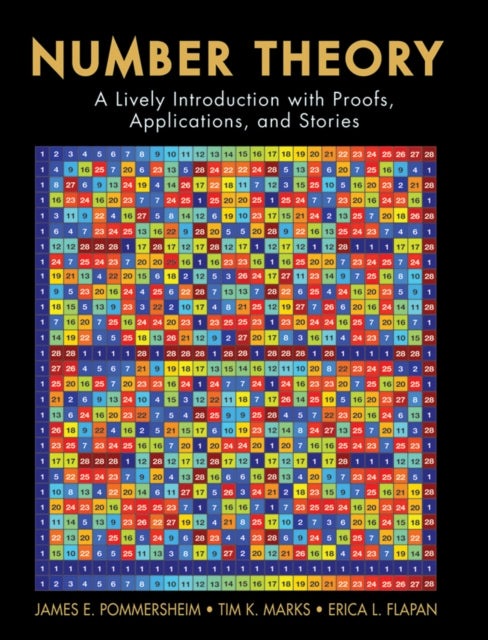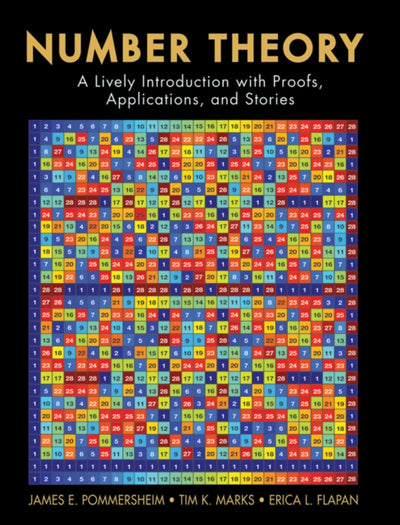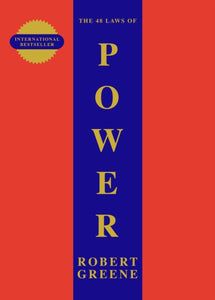Podrobnosti o izdelku
Poglej vseISBN
9780470424131Mladinska knjiga ID
402059Leto izida
2009Datum izida
28.02.2009Velikost (šxdxv)
150 × 200 × 10Status dobavljivosti
Na zalogi pri dobaviteljuJezik
ANGZaložnik
JOHN WILEY & SONS LTDAvtor
JAMIE POMMERSHEIMOpis
A Mathemythical ApproachPresents an introduction to elementary number theory along with relevant applications. This title features readable discussions that motivate fresh concepts and theorems before their formal definitions and statements are presented."Number Theory: A Mathemythical Approach", is a new book that provides a rigorous yet accessible introduction to elementary number theory along with relevant applications. Readable discussions motivate new concepts and theorems before their formal definitions and statements are presented. Many theorems are preceded by Numerical Proof Previews, which are numerical examples that will help give students a concrete understanding of both the statements of the theorems and the ideas behind their proofs, before the statement and proof are formalized in more abstract terms. In addition, many applications of number theory are explained in detail throughout the text, including some that have rarely (if ever) appeared in textbooks. A unique feature of the book is that every chapter includes a math myth, a fictional story that introduces an important number theory topic in a friendly, inviting manner. Many of the exercise sets include in-depth explorations, in which a series of exercises develop a topic that is related to the material in the section.Contents Preface To the Student To the Instructor Acknowledgements 0. Prologue 1. Numbers, Rational and Irrational or The Greek System (Historical figures: Pythagoras and Hypatia) 1.1 Numbers and the Greeks 1.2 Numbers you know 1.3 A First Look at Proofs. 1.4 Irrationality of the square root of 2 1.5 Using Quantifiers 2. Mathematical Induction (Historical figure: Noether) 2.1 The Principle of Mathematical Induction 2.2 Strong Induction and the Well Ordering Principle 2.3 The Fibonacci Sequence and the Golden Ratio 2.4 The Legend of the Golden Ratio 3. Divisibility and Primes (Historical figure: Eratosthenes) 3.1 Basic Properties of Divisibility 3.2 Prime and Composite Numbers 3.3 Patterns in the Primes 3.4 Common Divisors and Common Multiples 3.5 The Division Theorem 3.6 Applications of gcd and lcm 4.The Euclidean Algorithm or Tales of a Master Baker (Historical figure: Euclid) 4.1 The Euclidean Algorithm 4.2 Finding the Greatest Common Divisor 4.3 A Greeker Argument that the square root of 2 is Irrational 5. Linear Diophantine Equations or General Potato Theory (Historical figure: Diophantus) 5.1 The Equation aX + bY = 1 5.2 Using the Euclidean Algorithm to Find a Solution 5.3 The Diophantine Equation aX + bY = n 5.4 Finding All Solutions to a Linear Diophantine Equation 6. The Fundamental Theorem of Arithmetic or Monopolizing the Internet (Historical figure: Mersenne) 6.1 The Fundamental Theorem 6.2 Consequences of the Fundamental Theorem 7. Modular Arithmetic or Interplanetary Math (Historical figure: Gauss) 7.1Congruence modulo n 7.2 Arithmetic with Congruences 7.3 Check Digit Schemes 7.4 The Chinese Remainder Theorem 7.5 The Gregorian Calendar 7.6 The Mayan Calendar 8. Modular Number Systems (Historical figure: Turing) 8.1 The Number System Zn: an Informal View 8.2 The Number System Zn:Definition and Basic Properties 8.3 Multiplicative Inverses in Zn 8.4 Elementary Cryptography 8.5 Encryption Using Modular Multiplication 9. Exponents Modulo n (Historical figure: Fermat) 9.1 Fermat's Little Theorem 9.2 Reduced Residues and the Euler j-function 9.3 Euler's Theorem 9.4 Exponentiation Ciphers with a Prime modulus 9.5 The RSA Encryption Algorithm 10. Primitive Roots (Historical figure: Lagrange) 10.1 n 10.2 Solving Polynomial Equations in Zn 10.3 Primitive Roots 10.4 Applications of Primitive Roots 11. Quadratic Residues (Historical figure: Eisenstein) 11.1 Squares Modulo n 11.2 Euler's Identity and the Quadratic Character of -1 11.3 The Law of Quadratic Reciprocity 11.4 Gauss's Lemma 11.5 Quadratic Residues and Lattice Points 11.6 The Proof of Quadratic Reciprocity 12. Primality Testing (Historical figure: Erds) 12.1 Primality testing 12.2 Continued Consideration of Charmichael Numbers 12.3 The Miller-Rabin Primality test 12.4 Two Special Polynomial Equations in Zp 12.5 Proof that Millar-Rabin is Effective 12.6 Prime Certificates 12.7 The AKS Deterministic Primality Test 13. Gaussian Integers (Historical figure: Euler) 13.1 Definition of Gaussian Integers 13.2 Divisibility and Primes in Z[i] 13.3 The Division Theorem for the Gaussian Integers 13.4 Unique Factorization in Z[i] 13.5 Gaussian Primes 13.6 Fermat's Two Squares Theorem 14. Continued Fractions or a cantankerous collaboration (Historical figure: Ramanujan) 14.1 Expressing Rational Numbers as Continued Fractions 14.2 Expressing Irrational Numbers as Continued Fractions 14.3 Approximating Irrational Numbers Using Continued Fractions 14.4 Proving that Convergents are Fantastic Approximations 15. Some Nonlinear Diophantine Equations (Historical figure: Germain) 15.1 Pell's Equation 15.2 Fermat's Last Theorem 15.3 Proof of Fermat's Last Theorem for n = 4 15.4 Germain's Contributions to Fermat's Last Theorem 15.5 A Geometric look at the Equation x4 + y4 = z2 Appendix: Axioms of Number Theory A.1 What is a Number System? A.2 Order Properties of the Integers A.3 Building Results From Our Axioms A.4 The Principle of Mathematical Induction
Pogosto kupljeno skupaj
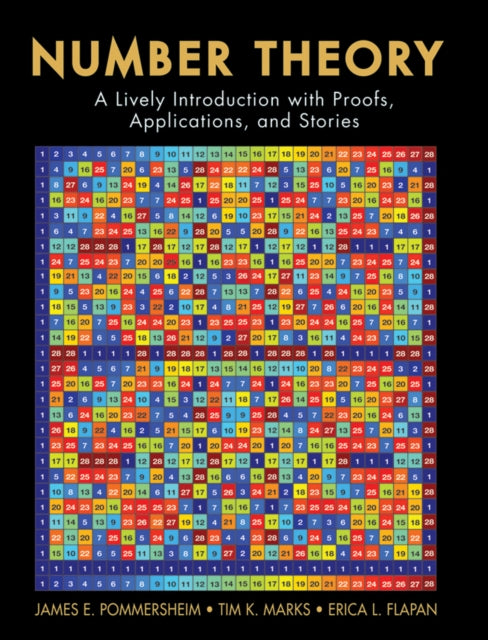
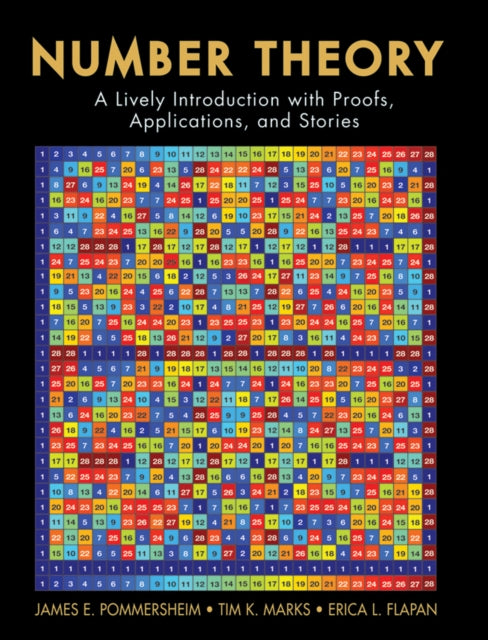
Trda
Ostali so si ogledali tudi ...


Več kot pol milijona knjig
Največja ponudba slovenskih in tujih knjig na enem mestu.

Enostaven nakup
Do izbranega le z nekaj kliki na spletu ali v eni od več kot 50 knjigarn.
Strokoven nasvet
Pred nakupom nas pokličite za nasvet ali se oglasite v knjigarni.

Vse za šolo
Nagrajena izobraževalna gradiva in kakovostne potrebščine.

Celovita ponudba za dom in pisarno
Vrhunski izdelki priznanih blagovnih znamk.
Brezplačna dostava
Brezplačna dostava za vsa naročila nad 59 € (za šolske pakete nad 140 €)
Knjigarne
Zaloga
×Osveženo 26.03.2023 10:09
Slovenska cesta 29, 1000 Ljubljana
E-naslovSpletna knjigarna: info@emka.si, Mladinska knjiga Založba: info@mladinska-knjiga.si
Kontakt01 241 30 00
Brezplačna številka080 12 05
Prijava na e-novice
© 2025 Mladinska knjiga. Vse pravice pridržane.
- Ko izberete elemente, se celotna stran osveži.
- Odpre se v novem oknu.
